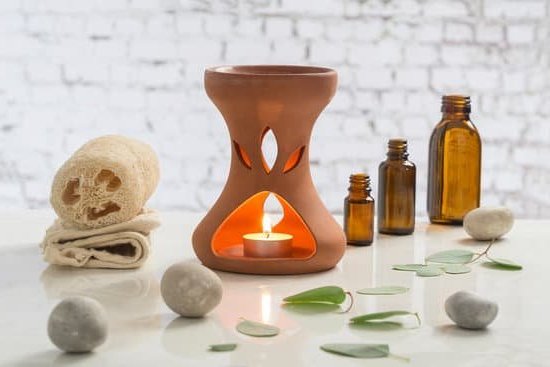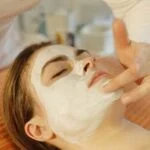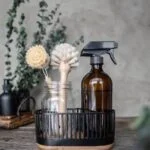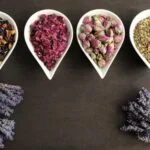Aromatherapy has been used for centuries as a natural way to improve physical, mental, and emotional well-being. By harnessing the power of essential oils derived from plants, aromatherapy can provide relaxation, stress relief, and overall wellness. In this article, we will explore easy aromatherapy recipes that you can easily incorporate into your daily routine to experience the benefits of this ancient practice.
Essential oils are the foundation of aromatherapy, each with its unique properties and potential benefits. Whether you are looking to promote relaxation, boost energy levels, or improve focus, there is an essential oil that can help achieve your desired outcome. From lavender for calming effects to peppermint for enhancing mental clarity, understanding the basics of essential oils is key to maximizing their therapeutic effects in aromatherapy recipes.
Creating a soothing atmosphere is essential when practicing aromatherapy. By incorporating calming scents into your environment through diffusers or candles, you can enhance the overall experience and reap the full benefits of essential oils. Stay tuned as we delve into easy aromatherapy recipes designed to promote relaxation and stress relief, allowing you to embrace the power of aromatherapy in your daily routine effortlessly.
Benefits of Aromatherapy
Aromatherapy has been used for centuries as a holistic healing treatment that harnesses the power of essential oils to improve physical, emotional, and mental wellbeing. The benefits of aromatherapy are vast and can have a positive impact on various aspects of your life. From reducing stress and anxiety to promoting relaxation and improving sleep quality, essential oils have the potential to enhance your overall wellbeing.
Stress Reduction and Relaxation
One of the most popular uses of aromatherapy is for stress reduction and relaxation. Essential oils like lavender, chamomile, and bergamot are known for their calming properties and can help ease feelings of tension or anxiety. Diffusing these oils in a room or adding them to a relaxing bath can create a soothing environment that promotes relaxation and tranquility.
Mood Enhancement
Aromatherapy can also be beneficial for enhancing mood and uplifting spirits. Citrus essential oils such as lemon, orange, and grapefruit are commonly used in aromatherapy blends to promote feelings of happiness and positivity. By incorporating these uplifting scents into your daily routine, you can boost your mood and improve your overall outlook on life.
Improved Sleep Quality
Many people struggle with sleep issues such as insomnia or restless nights. Aromatherapy can be a natural solution to help improve sleep quality. Essential oils like lavender, cedarwood, and ylang-ylang have sedative properties that can promote relaxation and encourage restful sleep.
Creating a bedtime ritual with these calming essential oils can signal to your body that it’s time to unwind and prepare for a restful night’s sleep. Incorporating easy aromatherapy recipes into your nightly routine can lead to significant improvements in your sleep quality over time.
Essential Oils 101
When diving into the world of aromatherapy, understanding the different essential oils available is crucial. Essential oils are derived from various plants, flowers, and herbs, each carrying its own unique scent and therapeutic properties. Here is a guide to some of the most popular essential oils and their common uses:
Lavender
One of the most versatile essential oils, lavender is known for its calming and relaxing properties. It can help reduce anxiety, promote better sleep, and soothe headaches. Lavender oil is often used in diffusers or added to bathwater for a soothing experience.
Peppermint
Peppermint essential oil has a refreshing and invigorating scent that can help boost energy levels and improve focus. It is also helpful in relieving nausea, muscle tension, and congestion when diffused or applied topically with a carrier oil.
Tea Tree
Tea tree oil is renowned for its antibacterial and antifungal properties. It is commonly used in skin care products to treat acne, cuts, and insect bites. Diffusing tea tree oil can also help purify the air in your space.
These are just a few examples of popular essential oils; there are many more with their own unique benefits. Experimenting with different oils and blends can help you find the perfect combination that suits your needs for relaxation, stress relief, or overall well-being. Start exploring easy aromatherapy recipes today to harness the power of essential oils in your daily routine.
Setting the Mood
Creating the perfect atmosphere is essential for maximizing the benefits of aromatherapy. Here are some easy tips to set the mood for a relaxing and rejuvenating aromatherapy session:
- Choose a quiet and peaceful space: Find a room or area in your home where you can unwind without distractions. This could be your bedroom, living room, or even a cozy corner with comfortable seating.
- Dim the lights: Soft lighting can help create a calming ambiance. Consider using candles, string lights, or a Himalayan salt lamp to add a gentle glow to the room.
- Select soothing music: Background music can enhance the overall experience of aromatherapy. Choose calming sounds like nature sounds, classical music, or ambient tunes to promote relaxation.
In addition to these ambiance-setting techniques, incorporating easy aromatherapy recipes can further elevate your experience. Aromatherapy recipes are simple blends of essential oils that cater to specific needs such as relaxation, stress relief, or mental clarity.
Here are some easy aromatherapy recipes you can try at home:
- Lavender Calm Blend: Combine 3 drops of lavender oil, 2 drops of chamomile oil, and 1 drop of bergamot oil in a diffuser for a calming and stress-relieving aroma.
- Citrus Uplift Blend: Mix 2 drops of lemon oil, 2 drops of orange oil, and 1 drop of grapefruit oil in a roller bottle with carrier oil for an energizing and mood-boosting blend.
- Minty Fresh Blend: Blend 3 drops of peppermint oil, 2 drops of eucalyptus oil, and 1 drop of rosemary oil in a bowl of steaming water for respiratory support and mental clarity.
By combining these easy aromatherapy recipes with the right ambiance-setting techniques, you can create a truly therapeutic environment that promotes relaxation, reduces stress, and enhances your overall wellbeing.
Easy Aromatherapy Recipes for Relaxation and Stress Relief
Aromatherapy is a powerful tool for relaxation and stress relief, offering a natural and holistic approach to improving your overall well-being. By incorporating easy aromatherapy recipes into your daily routine, you can create a soothing and calming atmosphere that promotes relaxation and reduces stress. Whether you prefer using a diffuser, creating a massage oil, or adding essential oils to your bath, there are numerous ways to enjoy the benefits of aromatherapy in your own home.
To get started with easy aromatherapy recipes for relaxation and stress relief, consider trying the following blends:
- Lavender and Chamomile Diffuser Blend: Combine 3 drops of lavender essential oil with 2 drops of chamomile essential oil in a diffuser to create a calming ambiance that promotes relaxation.
- Citrus Burst Bath Soak: Add 5 drops of grapefruit essential oil, 3 drops of orange essential oil, and 2 drops of lemon essential oil to a warm bath for an invigorating and uplifting experience that helps reduce stress.
- Calming Massage Oil: Mix 1 ounce of carrier oil (such as sweet almond or jojoba) with 4 drops of ylang-ylang essential oil, 3 drops of bergamot essential oil, and 2 drops of frankincense essential oil for a soothing massage blend that promotes relaxation.
These easy aromatherapy recipes can be easily customized to suit your preferences and needs. Experiment with different essential oils and blends to find what works best for you. Whether you need a quick pick-me-up during a busy day or want to unwind after a long week, incorporating aromatherapy into your self-care routine can have profound benefits for both your physical and mental well-being.
DIY Aromatherapy Blends
Aromatherapy blends are a wonderful way to customize your scent experience and maximize the benefits of essential oils. By combining different oils, you can create a unique aroma that suits your mood or specific needs. Whether you’re looking to relax, boost your energy, or alleviate stress, there is a blend out there for you. The best part is that making your own DIY aromatherapy blends is easy and fun.
One popular blend for relaxation and stress relief combines lavender, chamomile, and frankincense essential oils. Lavender is known for its calming properties, chamomile helps with anxiety and insomnia, while frankincense promotes deep breathing and relaxation. Simply mix a few drops of each oil in a roller bottle with a carrier oil like jojoba or sweet almond oil and apply it to pulse points or inhale the scent deeply for instant relaxation.
If you’re looking to uplift your mood and boost energy levels, consider blending citrus oils like lemon, orange, and grapefruit. Citrus scents are known for their invigorating properties that can help improve focus and motivation.
Mix equal parts of these oils in a diffuser along with water and let the refreshing aroma fill the room to enhance productivity throughout the day.Experimenting with different essential oil combinations is key to finding what works best for you. Don’t be afraid to try new blends or adjust the ratios of oils to create your perfect aromatic experience.
| Aromatherapy Blend | Benefits |
|---|---|
| Lavender, Chamomile, Frankincense | Relaxation and Stress Relief |
| Lemon, Orange, Grapefruit | Mood Uplifting and Energy Boosting |
Safety Precautions and Best Practices for Aromatherapy
Aromatherapy, when practiced safely and correctly, can offer numerous benefits for both physical and mental well-being. It is essential to understand some safety precautions and best practices to ensure that you are using essential oils in a way that promotes wellness without causing harm.
One important rule to keep in mind is that essential oils are highly concentrated substances and should never be ingested. They should be used topically with a carrier oil or diffused into the air for inhalation purposes.
When applying essential oils on your skin, always perform a patch test first to check for any allergic reactions or sensitivities. Dilute the essential oil with a carrier oil, such as jojoba or coconut oil, before applying it directly to the skin to prevent irritation.
Additionally, be cautious when using certain oils around children, pregnant women, or individuals with specific medical conditions. Some essential oils may not be safe for these populations, so it is crucial to do thorough research before incorporating aromatherapy into their routines.
Proper storage of essential oils is also critical in maintaining their quality and potency. Store them in dark glass bottles in a cool, dark place away from direct sunlight and heat sources.
It is also advisable to label each bottle clearly with the name of the oil and its date of purchase to ensure you are using fresh oils for maximum benefits. By following these safety precautions and best practices, you can enjoy the many advantages of aromatherapy while minimizing any potential risks associated with improper use.
| Aromatherapy Safety Precautions | Best Practices |
|---|---|
| Performing patch tests before skin application | Diluting essential oils with carrier oils |
| Avoiding ingestion of essential oils | Researching safe usage around vulnerable populations |
| Properly storing essential oils in dark glass bottles | Labeling bottles with names and purchase dates |
Conclusion
In conclusion, incorporating aromatherapy into your daily routine can have a multitude of benefits for your overall wellbeing. By understanding the basics of aromatherapy and the various essential oils and their uses, you can easily create a personalized experience to help you relax, uplift your mood, or relieve stress. The power of scent is truly remarkable in how it can impact our emotions and mental state.
By setting the perfect atmosphere with the right essential oils and creating easy aromatherapy recipes tailored to your needs, you can enhance your daily life in a natural and holistic way. Whether you prefer diffusing oils, creating DIY blends, or adding them to bath or massage products, there are endless possibilities to explore when it comes to incorporating aromatherapy into your routine.
Remember to always practice safety precautions when using essential oils, such as proper dilution methods and being aware of any potential allergic reactions. With a bit of knowledge and creativity, you can easily harness the benefits of aromatherapy in your daily life. So go ahead and embrace the power of aromatherapy as a valuable tool for self-care and relaxation.
Frequently Asked Questions
How Do You Make Homemade Aromatherapy?
Making homemade aromatherapy products is relatively simple and enjoyable. Begin by selecting your favorite carrier oil, such as coconut or almond oil, and then add a few drops of essential oils with aromatic properties that you enjoy.
Mix these oils together and store them in a dark glass bottle to preserve their effectiveness. Finally, use your homemade aromatherapy blend in a diffuser or apply it topically for a calming experience.
What Is the Easiest Way to Make Essential Oils at Home?
The easiest way to make essential oils at home is through the process of steam distillation. This method involves heating water with plant material in a still, allowing the steam to pass through the plant material and carrying the essential oil vapors into a condensation chamber where they can be collected.
While steam distillation requires specific equipment and some expertise, it can be a rewarding way to create your own essential oils from plants like lavender or peppermint.
What Are the Best Essential Oil Combinations?
Determining the best essential oil combinations ultimately depends on personal preference and desired outcomes. Some popular combinations include lavender and chamomile for relaxation, peppermint and eucalyptus for respiratory support, or lemon and rosemary for mental clarity.
Experimenting with different combinations of essential oils can help you discover unique blends that suit your needs and preferences perfectly. Remember to always dilute essential oils properly before using them on your skin or in a diffuser.

Are you looking for a natural way to improve your health and wellbeing?
If so, aromatherapy may be the answer for you.





